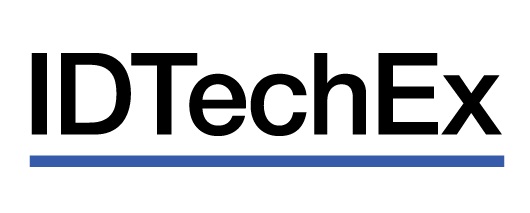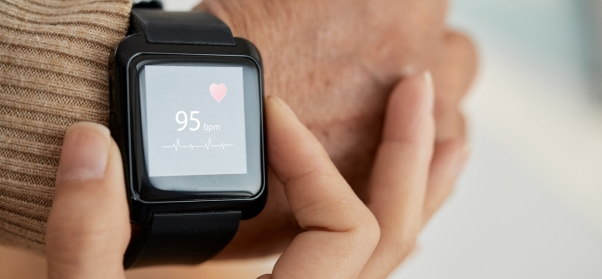
Smartwatches as a Medical Device? Progress and Outlook from IDTechEx
CAMBRIDGE, UK / AGILITYPR.NEWS / June 30, 2020 / Wearable electronic devices are an excellent option for detecting the physiological parameters of the wearer. Of the $70bn wearable technology market in 2019, $20bn in revenue came from wearable medical devices. On top of this, an additional $28bn came from non-medical product categories such as fitness and infotainment product categories that also integrate physiological monitoring to some degree. Traditionally, these two sectors have been clearly separated along dividing lines in the form of regulatory barriers.

However, the introduction of increasingly sophisticated physiological monitoring techniques into products such as smartwatches indicates increasing encroachment towards and over this line, bringing traditional consumer product companies towards the realm of the medical device. In this article, we will look at some examples of how technology is driving smartwatches towards the medical space and discuss the strategic decisions of how and when to cross the regulatory barriers.
Last week, Apple announced the latest features that will be added to the Apple Watch in watchOS 7. Amongst the range of updates were a series of new health app features, including new "mobility metrics" such as low-range cardio fitness, walking speed, stair-descent speed, stair-ascent speed, six-minute walk distance, double support time, step length, and asymmetry. These new features are based on motion sensing hardware that has been present in each edition of the product, illustrating the advancement in the algorithms used to characterise motion. Previously, watch motion analysis was prominently used in a variety of other features such as step counting, activity characterisation and fall detection alerts (one of the first medical-related functions on the product).
The most prominent medical feature on the Apple's market leading smartwatch was the ECG monitoring introduced with the Apple Watch 4 in late 2018. Apple gained FDA Class II clearance for the ability to detect and notify the user of irregular heart rhythm and an ECG app which could be used to identify potential signs of atrial fibrillation. These were deployed by using the watch crown or features in a strap as an electrode, with biopotential measured at the finger. This functionality was very similar to another product, the KardiaBand from AliveCor. This originally available as a third-party accessory for the Apple Watch with an accompanying app, but was discontinued in 2019 after Apple integrated the feature into the core product.
Apple is certainly not the only smartwatch player to introduce more medical metrics into devices. Another relatively common example is the introduction of wearable pulse oximetry. The technique involves measuring oxygen saturation (known as spO2), usually via photonic sensing system involving red and infrared light. Traditionally, pulse oximetry would be done via a transmissive approach (e.g. measured on the finger using a finger clip device), but recent advances have also demonstrated a reflective version that can be deployed in a smartwatch. This has been announced in both non-medical products from companies such as Garmin, Fitbit and Withings, but also in regulated medical devices from players such as Oxitone Medical and others. The fundamentals of the technique deployed in the different devices are similar. However, without the formal regulatory approval, the non-medical devices can display rough indications of spO2 over time or build it into rough aggregate health metrics, but cannot link this to any formal medical claims such as detection of sleep apnea.
Another medical metric with growing popularity in wearable products is blood pressure monitoring. Players such as Omron have taken the principals of a blood pressure cuff and deployed this within FDA Class II cleared smartwatches, and other players have produced similar devices based on this "occlusive" method. However, there is also a move around "cuffless" optical blood pressure detection. Whilst the earlier patents for this go back over a decade (e.g. from CSEM), there has been a more recent move to deploy optical blood pressure in wearable products. Whilst wrist-worn optical blood pressure sensing claims have also been made, the more prominent area of discussion for this in 2020 is in hearables, with companies such as Valencell announcing systems for this in 2020. The result is complex ecosystem with different levels of claims and regulatory approval, and different product types. We cover this topic in detail in the IDTechEx report on hearables.
All of these applications sit within a section of overlap, where similar device functions can be either recognised as fitness/wellness or medical/healthcare depending on the level of claims made and the regulatory clearance. Products on the fitness/wellness side can use any of the metrics mentioned as part of general health assessment algorithms, but cannot provide specific medical metrics or diagnoses. Regulatory clearance means they have been specifically benchmarked against previously approved medical products and produce equivalent performance in the specific area of assessment. This enables more claims to be made by the device maker, as well as use of the product in specific environments related to the area of approval. The regulatory boundary is clear, but sits atop a product and application ecosystem which is a continuum from fitness/wellness through to healthcare/medical.
For the majority of medical devices, regulatory approval or clearance is an essential prerequisite to commercial sales. However, smartwatches now join groups of other products which exist on the boundary where choosing whether or not to seek formal medical device approvals is a more complicated strategic decision. We have covered other product areas such as this in other reports, for example in the IDTechEx report on Electronic Skin Patches where we looked at electrical stimulation in detail. These devices can be used in a variety of applications such as muscular training and pain management, but are sold across a spectrum of both "wellness" devices or "medical" devices depending on the level of approval. Medical approval does open up some new application areas (e.g. EMS rehabilitation for road accident recovery), adds to what can be claimed in product marketing, and often results in higher sales prices for the products. On the other hand, it costs a significant investment of time and money to get the approval in the first place, and performance can often be largely equivalent between the medical and non-medical versions (according to sources from companies with products in both areas).
The situation is similar with smartwatches. The FDA clearance for ECG and atrial fibrillation alerts plus future options such as some of those mentioned previously does open up new application possibilities for these devices. However, these remain relatively minor when compared to the broad adoption of the smartwatch space as a whole. The approval does give an interesting edge in marketing, both in terms of the specific products but also in the higher-level narrative around the technology positioning and reputation of the parent company. However, this again is a subtle advantage and typically still just a side note in the general product marketing narrative. For example, the new mobility metrics announced with watchOS 7 were not directly mentioned in the WWDC keynote presentations, with details only appearing on a supporting press release. In general, the favoured approach seems to focus on under-promising and over-delivering, managing customer expectation in the short term whilst developing partnerships, know-how, product capabilities and strategies for an expanding medical relevance over time.
This topic is widely discussed throughout IDTechEx's reports and narrative around wearable technology and related device sectors. The core narrative is discussed in “Wearable Technology Forecasts 2020-2030”, and other reports, such the Hearables and Electronic Skin Patches reports mentioned, but also others on topics such as digital health and remote patient monitoring as well as specific disease verticals such as diabetes management or cardiovascular disease. Our focus throughout is on technology development and its commercialisation, tracking the latest technology developments in different fields but then assessing the complex and varied commercial scenarios in which they are deployed. IDTechEx provides this information to customers in the form of reports, but also via a market intelligence subscription service and extensive consulting opportunities as appropriate. For more information, please contact us at research@IDTechEx.com to ask any questions and we'll be happy to help in whatever way we can.
Contacts